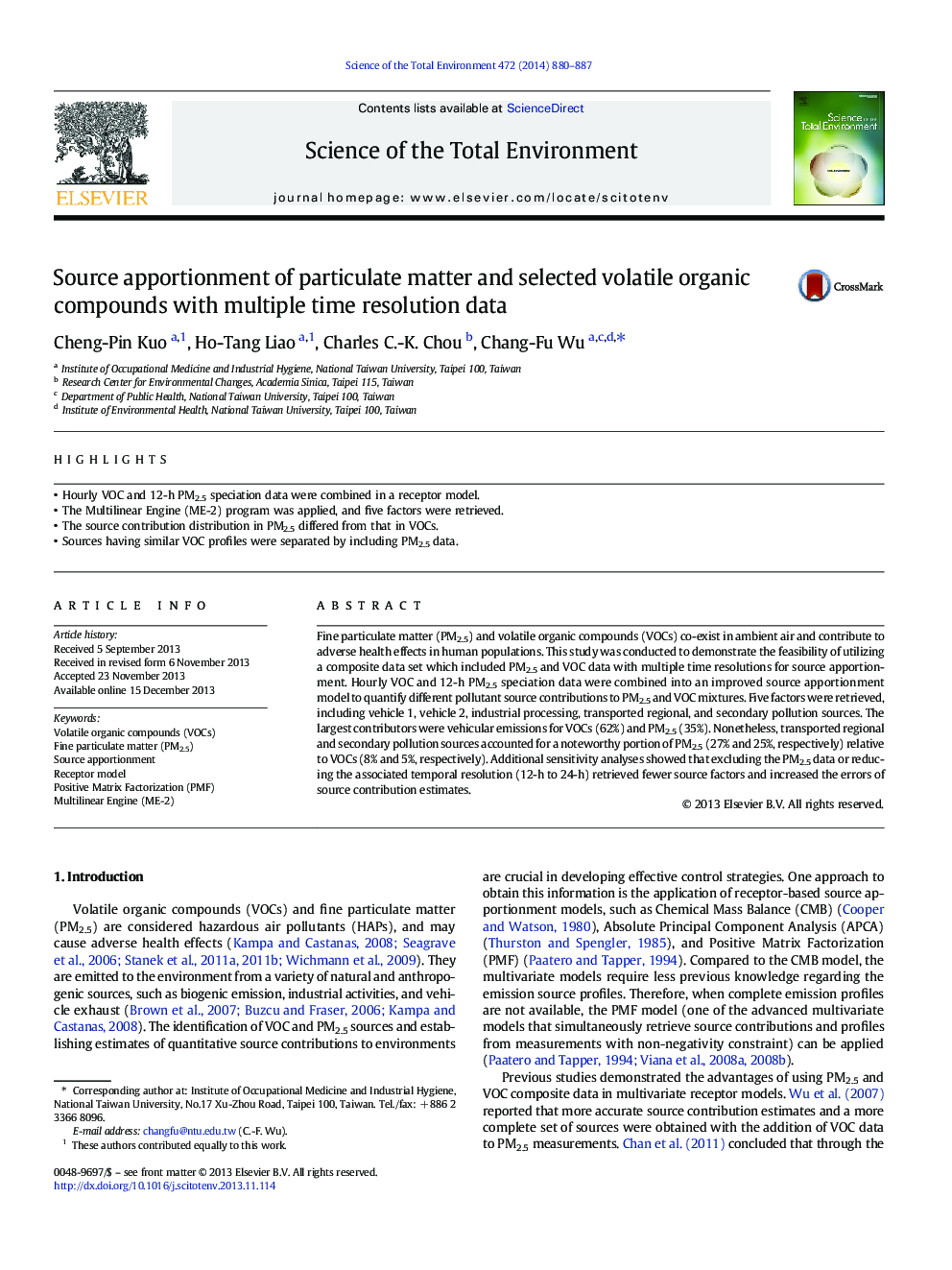| Article ID | Journal | Published Year | Pages | File Type |
|---|---|---|---|---|
| 6331289 | Science of The Total Environment | 2014 | 8 Pages |
Abstract
Fine particulate matter (PM2.5) and volatile organic compounds (VOCs) co-exist in ambient air and contribute to adverse health effects in human populations. This study was conducted to demonstrate the feasibility of utilizing a composite data set which included PM2.5 and VOC data with multiple time resolutions for source apportionment. Hourly VOC and 12-h PM2.5 speciation data were combined into an improved source apportionment model to quantify different pollutant source contributions to PM2.5 and VOC mixtures. Five factors were retrieved, including vehicle 1, vehicle 2, industrial processing, transported regional, and secondary pollution sources. The largest contributors were vehicular emissions for VOCs (62%) and PM2.5 (35%). Nonetheless, transported regional and secondary pollution sources accounted for a noteworthy portion of PM2.5 (27% and 25%, respectively) relative to VOCs (8% and 5%, respectively). Additional sensitivity analyses showed that excluding the PM2.5 data or reducing the associated temporal resolution (12-h to 24-h) retrieved fewer source factors and increased the errors of source contribution estimates.
Keywords
Related Topics
Life Sciences
Environmental Science
Environmental Chemistry
Authors
Cheng-Pin Kuo, Ho-Tang Liao, Charles C.-K. Chou, Chang-Fu Wu,
